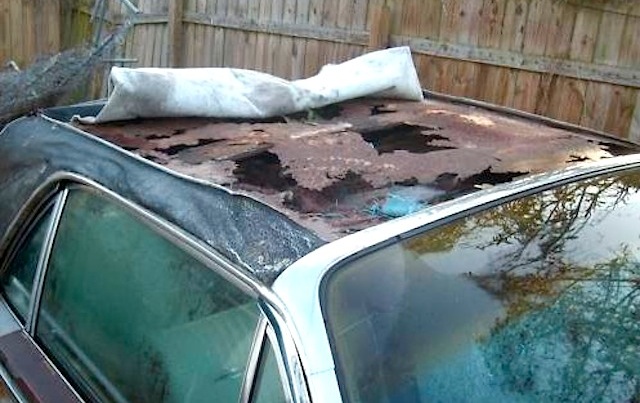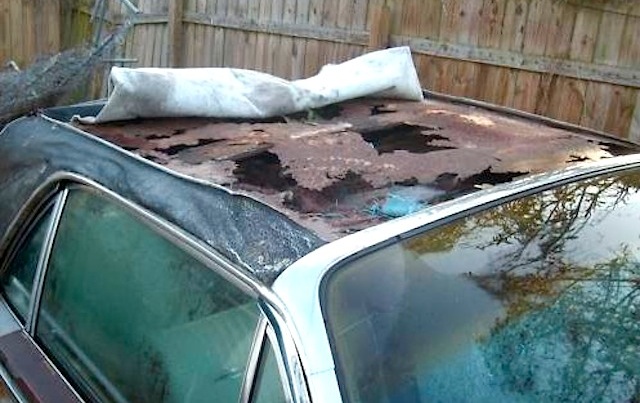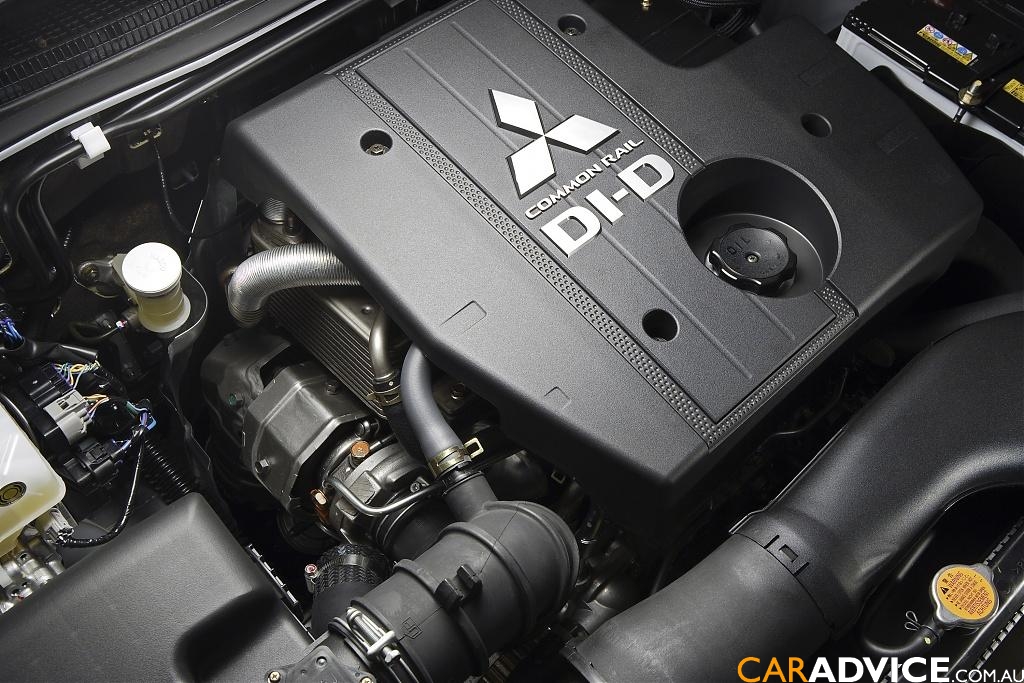Mitsubishi Pajero 2000-2014 Petrol Diesel repair manual
Mitsubishi Pajero repair manual - Covers NM, NP, NS, NT, NW,Montero, Shogun 1999 - 2014, LWB and SWB Vehicles with 12 Valve, 24 Valve, SOHC and DOHC Engines. 2000-2014NEW Softcover 528 pages Other Mitsubishi Car Repair Manuals click hereMitsubishi Pajero, Montero, Shogun Petrol & Diesel 2000 - 2014 Owners Service & Repair Manual Covers LWB and SWB Vehicles with 12 Valve, 24 Valve, SOHC and DOHC Engines. Note: Wiring diagrams are not included for the NS and NT series. Models Covered: *NW 2011-2014 Petrol Engines Covered: Diesel Engines Covered: Transmissions Covered: Contents: Wiring Diagrams are all Black and White:
|
In Japan, the Pajero is offered at a particular retail sequence labeled as "vehicles Plaza". Stopped in the usa in 2006, the vehicle continues to be offered within the remaining world with its fourth-generation iteration.
As a result of their particular success, the Pajero, Montero and Shogun names are also placed on various other, mechanically- unrelated models, such as the Pajero Mini kei vehicles, the Pajero Junior and Pajero iO/Pinin mini SUVs, and the Mitsubishi Pajero/Montero/Shogun Sport. Principal competitors are the land-rover development, Toyota Land Cruiser Prado SWB/LWB and Nissan Patrol Y61.
The Dakar Rally (or just "The Dakar"; formerly referred to as "Paris--Dakar Rally") is an annual rally raid organised by the Amaury Sport Organisation. Most activities because the beginning in 1978 were from Paris, France, to Dakar, Senegal, but considering security risks in Mauritania, which resulted in the cancellation regarding the 2008 rally, events since 2009 being presented in south usa. The race are ready to accept amateur and expert entries, amateurs typically getting back together about eighty % of the members.
The competition is an off road endurance occasion. The surface your competition traverse is much harder than which used in conventional rallying, while the motors used become true off-road automobiles instead of modified on-road vehicles. All of the competitive unique parts were off road, crossing dunes, mud, camel lawn, rocks, and erg amongst others. The distances of each and every stage covered change from brief distances to 800--900 kilometres (500--560 mi) daily.
1st generation made their debut in the Tokyo Motor program in October 1981, and was launched in May 1982. Initially, it was a three-door, short-wheelbase design readily available with a steel or fabric top and three different motors alternatives, although considerably had been gradually added, closing with a 3.0-liter V6 on top of the range.
Mitsubishi Pajero rear
2.0-liter 4-cylinder petrol (2000/2.0)
2.0-liter 4-cylinder turbocharged petrol (2000/2.0 Turbo)
2.6-liter 4-cylinder petrol (2600/2.6)
2.3-liter obviously aspirated diesel (2300 D/2.3 D)
2.3-liter turbocharged diesel (2300 TD/2.3 TD)
2.5-liter turbocharged diesel (2500 TD/2.5 TD)
3.0-liter V6 petrol (3000/3.0)
It was laden up with functions which had formerly not already been seen on a Japanese four-wheel-drive vehicles: a turbocharged diesel motor, a front side double wishbone suspension system with torsion bar springs, energy steering and suspension seating. This made the Pajero a four-wheel-drive car which incorporated all amenities of a passenger vehicle.
In January 1983, just a year after its release, mildly tuned manufacturing Pajeros registered the field of engine sport. The Pajero, but didn't attract every person. In Japan it absolutely was viewed as a commercial vehicle, and because it had been only obtainable in a short-wheelbase type, they don't actually appeal to individuals with family.
Mitsubishi Montero LS 5-door (US)
Hence, in February 1983, Mitsubishi arrived with a long-wheelbase, five-door design, to offer the needs of a more substantial target market. The long-wheelbase model is available with a choice of two various motors; a 2.0-liter turbocharged petrol (badged as "2.0 Turbo" and "2000 Turbo" in some areas) and a 2.3-liter turbocharged diesel. In addition came in Standard, Semi-High Roof and High roofing human anatomy styles. A stripped down nine-seater form of the High-Roof variant ended up being widely used in UN comfort procedures.
The long-wheelbase design in addition increased seating capacity to seven, with offered third line chairs, that could feel folded on edges for additional trunk area or coupled with 2nd row chairs to create a bed.
The Pajero was additional refined in June 1984. The turbo diesel motors today have greater power/torque score, as the long-wheelbase brands got standard four-wheel disc brakes and four-way adjustable surprise absorbers as standard gear.
Mitsubishi Pajero Intercooler Turbo Wagon 3-door
A flagship model was then introduced in early 1987, with two-tone paint, 15-inch light alloy rims, front-seat heaters, wool seat covers, real leather-based headrests, a three spoke controls and an audio system with radio/cassette. Additionally in 1987, a version of the Pajero/Montero had been rebadged by Dodge whilst the Raider, which ran through 1989.
Eventually in 1988, a 3.0-liter SOHC V6 system was offered, alongside a 2.5-liter turbo diesel system, using very first 4x4 intercooler. This translated to raised acceleration in mid to highest rev ranges. The long-wheelbase models have a coil connect suspension system for much better ride comfort and off-road capability.
It was available with a 3-door human anatomy for a quick wheelbase (SWB) or a 5-door human anatomy for a long-wheelbase (LWB). Motors included a 2.6 L I4 with 82 kW (110 hp/112 PS), a 3.0 L V6 with EFI and 104 kW (139 hp/141 PS) and a turbocharged 2.5 L OHC diesel I4 with 62 kW (83 hp/84 PS) or an intercooled 70 kW (94 hp/95 PS). Part-time four-wheel drive is standard on all systems.
The first generation platform ended up being later built under permit by Hyundai Precision Products due to the fact Hyundai Galloper from 1991 to 2003, and exported to European countries for a short time. Whilst it utilized first generation mechanicals, the Galloper's human body had been closer to the next generation Pajeros.
The 4G61 displaces 1595 cc (82.3 x 75.0 mm bore/ full length stroke). This engine ended up being always DOHC 16-valve and made use of either Multi-point (MPFI) or Electronic Control (ECFI) fuel shot. A turbocharged version has also been produced when it comes to Mirage and Lancer. The 4G61 does not have stability shafts like other 4G6x engines.
Overall Performance
4G61 91 kW-124 hp/650
4G61T (USA/Canada best) 99 kW-135 hp/6000 191 Nm/3000
4G61T (Japan) 145 HP-117.68 kW/6000 220.65 Nm/2500
Applications
1988--1992 Mitsubishi Mirage / Mitsubishi Colt (MPFI)
1988--1992 Dodge Colt / Plymouth Colt
1988--1992 Eagle Summit
1992--1995 Hyundai Elantra
4G62
The larger 1.8 L 4G62 is an SOHC 8-valve product for longitudinal rear-wheel drive and all-wheel drive usage. With an 80.6 x 88.0 mm bore / swing, they displaced 1,795 cc. It had been available in a choice of carburetor kind, multi-point fuel shot, or ECI Turbo as found in the Lancer EX 1800GSR or 1800GT, and Cordia GSR.
Applications
1983--1989 Mitsubishi Cordia
1983-1989 Mitsubishi Tredia
1981-1986 Mitsubishi Delica/L300/Express
1984-1988 Mitsubishi Galant/Eterna
1980-1987 Mitsubishi Lancer EX 1800GSR or 1800GT
1983-1987 Mitsubishi Chariot HR
4G63
G63B Cyclone Dash 3x2 in a 5th generation Galant
The 4G63 had been a 1997 cc variation. (85 mm bore x 88 mm swing) SOHC and DOHC are created. Both variations are available in either obviously aspirated and turbocharged form. For front-wheel drive solutions, the turbocharged Sirius' name was changed to "Cyclone Dash". As fitted to the 5th generation Galant 200 PS (147 kW) JIS gross were stated - the result reports later shrank to 170 PS - the turbocharged and intercooled "Sirius Dash 3x2 valve" system. This variation could change between respiration through two or three valves per cylinder, to mix large top-end energy with low-end drivability plus enabling cost-effective process. It was a modification of Mitsubishi MCA-Jet technology that used another consumption device to inject environment into the engine for lots more efficient emissions manage. The DOHC version had been launched in 1987 inside Japanese market Galant, and came in turbocharged or naturally aspirated form. It really is present in different designs including the 1988-92 Galant VR-4 and also the U.S. marketplace 1990-1999 Eclipse, as well as the Mitsubishi Lancer development I-IX. Later on variations also gotten Mitsubishi's variable valve-timing system, Mivec.
A SOHC carbureted eight-valve version (system code G63B) was also available in Mitsubishi's pickups (L200, Strada, Mighty Max, Dodge Ram 50) from the eighties before mid-nineties. They produces 92 hp (69 kW) at 5,500 rpm in European trim (1989). The SOHC variation has also been found in Mitsubishi Galant brands until 1993. It offers 76 kW of production and 157 Nm of torque at 4,750 rpm.
Mivec Turbo 4G63 in a Lancer Evo IX
Additionally, a SOHC variation ended up being created until the late 90s and very early 2000s and had been used in Mitsubishi vehicles such as the Montero plus the 2.0L 2-door Pajero with a production of 101 kW (137 PS) at 4,700 rpm. In addition the N33 and N83 Spacewagon and Galant (UK market) received the 4G63, in single-cam sixteen-valve structure. The same variation, with 100 PS (74 kW), has also been used in some light task Mitsubishi Canters from 1997 on.
The Mitsubishi Eclipse, Eagle Talon and Plymouth Laser introduced the DOHC turbocharged intercooled version to your U.S. in 1989 through Diamond celebrity engines, a partnership between Mitsubishi engines as well as the Chrysler Corporation. From 1990 to late April 1992 came beefier linking rods additionally the usage of six bolts to protected the flywheel on crankshaft; May 1992 to 2006 development models have lighter rods and employ seven bolts to protected the flywheel to your crankshaft. They are described as the "six bolt" and "seven bolt" motors, respectively.
Output the 2003 people Mitsubishi Lancer advancement try 271 hp (202 kW) at 6500 rpm with 273 lb*ft (370 N*m) of torque at 3500 rpm. It has a cast iron engine block and aluminum DOHC cylinder head. They makes use of multi-point fuel shot, has four valves per cylinder, try turbocharged and intercooled and features forged metal connecting rods.
The final type of the motor is present in Lancer Evolution IX. It absolutely was loaded with Mitsubishi's adjustable valve time program, MIVEC. This version furthermore have a revised turbocharger, extended get to spark plugs, two-piece rings.
The NA show was launched to Australia during January 1983 in short- (SWB) and long-wheelbase (LWB) three-door wagon platforms, because of the 2.6-liter petrol or 2.3-liter turbo diesel, both mated to a five-speed KM145 handbook transmission. Brake system had been ventilated forward disks and back drums. The five-door, high-roof LWB design was launched in-may 1984 with the exact same powertrain alternatives. The five-door supplied a including an extra Superwagon trim.
The NB of November 1984 included a revised grille, deleted the LWB three-door human body design and diesel engine the leftover SWB three-door. Mitsubishi Australia released the NC series in November 1985, exposing optional power steering, although the high-roof five-door turned to a low-roofed design.
A KM148 automatic gearbox became recommended on petrol Superwagon when it comes to October 1986 ND modify, although the 2.5-liter turbo diesel replaced the old 2.3-liter unit. When it comes to October 1987 NE show, the Japanese 2.6-liter petrol was changed using Australian-made Astron II version. Brake proportions had been in addition enhanced throughout the range.
In terms of equipment for NE, the three-door activities and five-door Superwagon included a finite slide differential, forward bumper overriders, a spare wheel address, part pin striping, 16-inch chrome rims and optional two-tone paint over the base cars. Inside, the high-end models also gotten an inclinometer, volt meter, oil force measure, stereo cassette player, remote gasoline filler release, suspension system motorist's chair, carpeting, tweed and velour cloth trim (over tweed fabric and vinyl).
September 1988's NF facelift saw the development of a 3.0-liter V6 system inside top-line Superwagon, delivering 105 kW (141 hp) and 228 N*m (168 lb*ft) via a five-speed V5MT1 handbook or four-speed KM148 automated. Suspension system became a three-link coil spring build in the rear; disc brake system on rear disc had been furthermore fitted to the V6 just.
The final NG refresh from September 1989 to April 1991 ended up being a trim and equipment readjustment. The KM148 automatic transmission is replaced because of the V4AW2 with lockup. High-end NG models (i.e. maybe not the beds base Commercial trim) now gotten chrome, truck-style part mirrors. An intercooler was also added to the 2.5-liter turbo diesel versions in 1990.
Super choose could be the brand name of a four-wheel drive program generated by Mitsubishi engines, made use of globally with the exception of the united states, where it had been initially referred to as Active-Trac. It absolutely was first introduced in 1991 utilizing the then-new second generation associated with Mitsubishi Pajero.
The machine offers a choice of four rear- or four-wheel driving settings, chosen using a lever mounted alongside the apparatus shift, and can be changed while the automobile is within movement. In 2H mode the leading axle try disconnected while the vehicle try rear-wheel drive. Decreased frictional loss into the powertrain signify gas economic climate improves while noise amount tend to be paid down. 4H was a part-time four-wheel drive mode utilizing a viscous coupling product (VCU) and center differential to direct drive toward front tires whenever back axle loses grip, and is capable of handling a multitude of path conditions and rates. 4HLc locks the guts differential to present extra traction for sandy, snowy or poorly surfaced roadways in "high range" mode, while 4LLc, the "low range" mode, now offers a much lower gearing, supplying the optimum amount of grip. Altering between 4HLc and 4LLc is feasible with all the car stationary.
The device is used on Mitsubishi's Pajero iO mini SUV, while their bigger Pajero, Challenger, Triton and Delica designs utilize a far more complex program dubbed Super choose II (SS4-II). Generally in most respects both are identical, even though the torque-split in SS4-II is 33/67 front/rear, meaning two-thirds associated with torque is channelled into back axle. In Super Select (SS4i) the torque-split is the same 50/50. SS4-II offers a choice to secure the trunk differential, offering better traction toward rear axle.
Mitsubishi redesigned the Pajeros for a moment generation, which debuted in January 1991, although exports failed to start until later in the year. Just about everything had been now newer and further improved. An innovative new, larger human body is obtainable in four various models; material Top, fabric Top Convertible, Semi High roofing Wagon and tall roofing Wagon (long wheelbase). The quick wheelbase versions are stretched by 70 millimetres (2.8 in) while the long-wheelbase versions by 30 millimetres (1.2 in). The readily available motors included a 3.0-liter 12-valve SOHC (6G72) with ECI-Multi digital gas injection and a 2.5-liter turbocharged diesel motor (4D56T) with an intercooler.
1997 Mitsubishi Pajero (NL) GLS truck (Australian Continent)
The 2nd generation furthermore spotted the development of Super choose 4WD (SS4) and multimode ABS, that have been firsts on Japanese four-wheel drives. SS4 is ground-breaking in good sense so it blended the benefits of part-time and full time four-wheel drive with four available choices: 2H (high-range rear-wheel drive), 4H (high-range full time four-wheel drive), 4HLc (high-range four-wheel drive with locked center differential) and 4LLc (low-range four-wheel drive with secured center differential). Another advantage for this 2nd generation program usually it gave the driver the capability to switch between two-wheel drive and full-time four-wheel drive at boosts to 100 km/h (62 mph), whereas the first generation Pajero must be fixed to change from rear-wheel drive to four-wheel drive ( not from four-wheel drive back into rear-wheel drive). Multimode abdominal muscles, on the other hand, is similarly innovative. This suggested abdominal muscles is completely functional throughout settings of SS4, as stopping with a locked center differential needs different braking parameters.
In July 1993, two new energy herbs had been launched; a 3.5-liter 24-valve DOHC with ECI-Multi and a 2.8-liter turbocharged diesel with an intercooler. A brand new, bigger transmission and transfer case was also area of the improvement.
1994 Mitsubishi Pajero (NJ) GLS truck (Australia)
1993 Mitsubishi Pajero (NJ) GLS hardtop (Australian Continent)
In 1996 the 3.0 V6 motor had been revised, keeping SOHC but switching to 24v. As well the ignition program had been enhanced from old provider system to solid-state coil packs. Power to 177 bhp (132 kW).
The Pajero development is launched in October 1997, that was created responding to new entry criteria when it comes to Paris -- Dakar Rally's T3 lessons. The Pajero advancement emerged traditional with a 3.5-liter 24-valve DOHC V6 with Mitsubishi Innovative Valve Timing and Electronic carry Control (MIVEC). A, double plenum variable consumption assisted augment power and a suspension made the ride even smoother.
In 1998, vehicles destined for General Export as well as the GCC (Gulf collaboration Council countries) obtained a facelift. Wider fenders, new headlights, grille, bumper, fog lighting and sidesteps are all area of the redesign. The large fenders in many cases are known as "blister flare fenders". Motorist and front-passenger SRS airbags are made traditional on versions equipped with the 3.5-liter DOHC V6 system, whilst nonetheless leftover recommended on GLS brands using the 3.0-liter SOHC V6. 1080 of the models are also assembled in Iran by Bahman Khodro team before being removed manufacturing. An upgraded inside timber trim had been offered on 3.0-liter GLS and 3.5-liter systems. A leather-wrapped or leather-based and timber trim tyre has also been made available, alongside an upgraded suspension system and steering program. The 3.0-liter 12-valve SOHC system ended up being now available with a 24-valve setup. Systems without wider fenders remained as base versions (GLX), available with a 2.4-liter 16-valve DOHC motor, making 147 hp (110 kW). The 3.0-liter 12-valve engine is recommended on these GLX products, and remained the base motor on the GLS.
The 2nd generation ended up being launched on 22 January 1991 and produced until 1999. It retained both human anatomy designs, but design ended up being rounder plus city-friendly versus past large model. The 3.0 L V6 gas system had been retained, available these days with a 24-valve head, with the capacity of 136 kW (177 hp/185 PS), although the 2.5 turbodiesel's power ended up being somewhat risen up to 73 kW (98 hp/99 PS). In 1993, the Pajero had been a little restyled, and larger motors had been launched, a 3.5 L V6 with 153 kW (215 hp/208 PS) and a 2.8 L SOHC turbodiesel rated at 92 kW (123 hp/125 PS). These models introduced Mitsubishi's Super Select four-wheel-drive program (referred to as Active-Trac in the us), with an electronic transfer move which could split power between both axles with no need to get rid of the car. They worked at boosts to 100 km/h (62 mph).
1st generation Pajero has also been advertised due to the fact Hyundai Galloper in Korea, Europe and GCC nations, as the second generation was in production somewhere else.
This design Pajero remains in manufacturing in Asia whilst the Pajero SFX; the newest generation is sold because the Montero. When you look at the Philippines it really is marketed given that Pajero "Field Master" 4x2 with all the 2.8L TD motor, alongside the 4th generation Pajero. The 4X4 variation is taken out of manufacturing in 1999. It is also still produced in Colombia from perfect knock-down parts (CKD), with a 2.4l 16 device SOHC (130 PS) or 3.0l 12 device V6 (148 PS), both machines can be obtained as a three-door difficult top, the five-door wagon just with the 3.0-liter V6.
In Venezuela, the 2nd generation was manufactured from 1992 to 1995 underneath the name of Mitsubishi Montero, it had been available in long-and-short wheel base. From 1996 to 2009 it name is changed to Mitsubishi Montero Dakar, it had been best obtainable in short wheel base with 6G72 motor and handbook five-speed transmission.
The Hyundai Galloper, also called the Galloper Exceed, Galloper development, Mitsubishi Galloper or Asia Galloper, was a mid-size SUV produced because of the South Korean producer Hyundai from 1991 to 2003. It absolutely was a rebadged earliest and second generation Mitsubishi Pajero and is assembled within Hyundai Precision & Ind. Co. factory in Seoul until 1999, whenever production is moved to the Hyundai engine Company. It's nearly the same as the Mitsubishi Pajero, a five passenger car with additional sitting for 2 into the back, increasing their capacity to a full seven passenger vehicle. It had been readily available with a 2-door human body on a short wheelbase for development brands or 5-door body on lengthy wheelbase for the Galloper I/IWe Exceed models.
Displacement - 2.5 L (2,476 cc)
Bore - 91.1 mm
Stroke - 95.0 mm
Gasoline type - Diesel
This system is also built by Hyundai in Southern Korea, indicating it also sees use in some items created by their Kia subsidiary.
Non-Turbo
Power - 55 kW (74 hp) at 4,200 rpm
Torque - 142 N*m (105 lb*ft) at 2,500 rpm
Engine type - Inline 4-cylinder SOHC
Fuel system - Distribution kind jet pump
Compression ratio - 21:1
Non-intercooled Turbo
Power - 84 PS (62 kW) at 4,200 rpm
Torque - 201 N*m (148 lb*ft) at 2,000 rpm
Engine-type - Inline 4-cylinder SOHC
Non-intercooled Turbo (TD04 Turbo)
Energy - 90 hp (67 kW) at 4,200 rpm
Torque - 197 N*m (145 lb*ft) at 2,000 rpm
Engine type - Inline 4-cylinder SOHC
Gas system - Distribution means jet pump
Compression proportion - 21:1
Intercooled Turbo (TD04 water-cooled Turbo)
Energy - 78 kW (104 hp) at 4,300 rpm
Torque - 240 N*m (177 lb*ft) at 2,000 rpm
Engine type - Inline 4-cylinder SOHC
Rocker supply - Roller Follower kind
Gas system - Distribution kind jet pump (indirect shot)
Burning chamber - Swirl means
Bore x Stroke - 91.1 x 95mm
Compression ratio - 21:1
Lubrication System - Pressure feed, complete circulation purification
Intercooler Means - Aluminium Air-to-Air, Top-mounted
Turbocharger - Mitsubishi TD04-09B
Also referred to as Hyundai D4BH
Intercooled Turbo (first Generation DI-D)
Energy - 85 kW (114 hp) at 4,000 rpm
Torque - 247 N*m (182 lb*ft) at 2,000 rpm
Engine-type - Inline 4-cylinder
Gasoline program - 1st Generation Common railway Direct Injection (CRDi)
Compression ratio - 17:1
Intercooled Turbo (second Generation DI-D)
Power - 100 kW (134 hp) at 4,000 rpm
Torque - 320 N*m (236 lb*ft) at 2,000 rpm
Engine type - Inline 4-cylinder
Fuel system - 2nd Generation popular train Direct Injection (CRDi)
Compression proportion - 17:1
Intercooled Turbo (3rd Generation DI-D with variable geometry turbo)
With handbook transmission
Energy - 131 kW (178 PS) at 4,000 rpm
Torque - 400 N*m (295 lb*ft) at 2,000 rpm
Engine type - Inline 4-cylinder
Gas system - 2nd Generation popular railway Direct shot (CRDi)
Compression ratio - 16.5:1
With automated transmission
Energy - 131 kW (178 PS) at 4,000 rpm
Torque - 350 N*m (258 lb*ft) at 1,800 rpm
Engine type - Inline 4-cylinder
Gasoline program - 2nd Generation popular Rail Direct injections (CRDi)
Compression proportion - 16.5:1
Designed in house the next generation Pajero hit the Japanese Domestic Market in 1999, whilst it had been made available to other markets in late 2000 as a 2001 design. The Philippines as well as other developing countries gotten this third generation Pajero in 2003. The vehicle had been totally redesigned, inside and out together with a diminished, larger position. A diminished center of gravity required the Pajero had better on-road management manners therefore the new system have over three hundred percent most torsional rigidity. The greatest switch to bring this over was your Pajero used a unibody building, instead of the previous body-on-frame (box-ladder). This permitted an extended suspension system swing. The gasoline tank was also relocated to between your axles for best protection. The next generation Pajero relocated one size up from mid-size to full size SUV. On 17 might 2004 Mitsubishi revealed which they had been deciding on shutting down the Gifu plant but do not following bad comments. The Gifu assembly plant try surrounded by Mitsubishi's more buildings in which make electronic devices for Mitsubishi's various other divisions. The Gifu plant is recognized as Pajero production Co. and solely creates the full size Pajero.
The SS4 program has also been further processed, as bevel gears are replaced with planetary people. This designed the front-to-rear torque position ranged from 33 to 67, with the ability to adjust to 50/50 dependent on surface circumstances. The device was also made completely electric, which implied the car did not have to be in gear to modify between drive modes. After every one of the upgrades, the device had been rebranded to Super Select 4WD II (SS4-II).
Alongside rack-and-pinion steering (as opposed to the recirculating baseball system on past generations), the Pajero also supplied a choice of three transmissions; a five speeds guide, a four speeds INVECS-II automatic and a five speeds INVECS-II tiptronic.
An all-new 3.8-liter SOHC 24-valve V6 powerplant was also introduced on this generation. This motor utilized an Electronic Throttle device (ETV), to supply a refined cruising energy with power to free for off road ventures.
The 3rd generation was introduced on 2 August 1999 and was planned to-be replaced by the Autumn of 2006, having already been restyled in 2003. It was more luxurious associated with three generations, going to an even more upscale section to vie against the Land Rover Discovery, but moreover, to counter their residence competing Toyota Land Cruiser's growth. The 3.0 L motor's power ended up being decreased to 130 kW (175 hp/177 PS), additionally the 3.5 L motor was presented with gas direct injections, increasing capacity to 162 kW (217 hp/220 PS) when you look at the Japanese market (export models kept the standard EFI system, now with 149 kW (200 hp/203 PS). The 2.8 L Diesel is retained limited to establishing markets, and ended up being changed by a brand new 16-valve direct injections engine, with 3.2 L and 120 kW (161 hp/163 PS).
Inside united states markets, the 3.5 L motor ended up being replaced for 2003 by a more effective 3.8 L unit, with 160 kW (215 hp/218 PS). This motor is later distributed around a few export areas eg south usa and Australian Continent, whilst they changed the GDI V6 in Japanese lineup in 2005. The quick wheelbase design is not obtainable in united states, in which the Montero could be the only SUV in Mitsubishi's lineup with standard four-wheel drive. Faced with falling purchases, the Montero ended up being taken from US markets after the 2006 model season.
The fourth generation was launched at Paris Motor Show on 30 September 2006 (even though some would argue that it was not a fresh generation whatsoever, but merely a makeover of the established automobile, which was around since 1999). Brand new inside and outside styling were combined with improved safety with dual-stage SRS front airbags including newer side-impact and curtain airbags. The Super-Select 4WD II system was retained, complemented by an improved Active Stability & Traction Control (ASTC) system and digital brakeforce circulation. With skid dishes, heavy weight equipment and 8.7 inches (220 mm) of surface approval the car maintains its reputation as one of the toughest & most capable 4x4s.
The machines were enhanced utilizing the 3.2 L diesel getting popular railway tech, a DPF for cleaner emissions and making 125 kW (167 hp/170 PS) plus the 3.8 L V6 getting MIVEC adjustable valve time to boost power to 184 kW (247 hp/250 PS). Both machines satisfy brand new Euro IV emissions criteria. The 3.0 L V6 was retained for the Japanese and GCC areas.
From 2009, the 3.0L V6 motor is dropped inside GCC areas, and had been changed by a 3.5L V6 motor, rated for 141 kW (189 hp/192 ps) and 306 Nm torque. More improvements into 3.2L Turbo Diesel when you look at the 2011 design season spotted the energy and torque increased to 147 kW/197 hp/200 PS and 441Nm correspondingly. System satisfy newer Euro V emissions specifications. The 3.8L petrol system stayed at 184 kW and 329Nm (using 95RON gasoline). Addititionally there is a panelled Van version available in areas where such a model may be signed up at a lower life expectancy income tax rates.
The 2010 design year the Pajero attained a Rockford acoustic sound system and two interior colors options, black and beige, in some markets.
For 2012, this model happens to be minimally restyled and considering an improved monocoque human anatomy and suspension.
The 2015 design year Pajero has received an up-to-date front side fascia with a revised grille, Light-emitting Diode daytime operating lights and a fresh extra tire cover. The inner build for the model can also be a little up-to-date also it include the metallic trim, the brand new piano black colored accents for VR II, the timber grain trim for the Exceed and Super Exceed as well as the extra sound deadening information. The engines will likely be carried more than and they will through the 3.0-liter 6G72 V6, the 3.5-liter 6G74 V6, the 3.8-liter 6G75 V6, the 2.8-liter four-cylinder turbo diesel 4M40, additionally the 3.2-liter 4M41 typical rail four-cylinder turbo diesel.
Mitsubishi Pajero: Review, Specification, Price | CarAdvice
Mitsubishi's Pajero is an ageing warhorse in a competitive segment. Does it still have the weapons to fight the segment leaders.
New & Used Mitsubishi Pajero cars for sale in Australia ...
Search for new & used Mitsubishi Pajero cars for sale in Australia. Read Mitsubishi Pajero car reviews and compare Mitsubishi Pajero prices and features at carsales ...
Used MITSUBISHI PAJERO cars for sale on Auto Trader
Used MITSUBISHI PAJERO for sale - Browse for used MITSUBISHI PAJERO for sale on Auto Trader, South Africa's biggest provider for used MITSUBISHI PAJERO cars. Buy your ...
PAJERO / MONTERO | MITSUBISHI MOTORS
THE NEW MITSUBISHI PAJERO / MONTERO. DESIGN QUALITY ALL IN ONE PACKAGE. The ultimate performance and high quality features in one package.
Used MITSUBISHI PAJERO (MONTERO / SHOGUN) for Sale
Search MITSUBISHI PAJERO for sale. Wide varieties, Price variations, Color variations, Mileage variations, Year variations. More than 3,000 units. Buy Cheap & Quality ...
Pajero Sport, SUV in India | Top ten SUV in India | SUV ...
Mitsubishi was launched Pajero Sport India's No 1 Sport utility vehicle. Mitsubishi Pajero Specifications, Pajero Car Colours, 4x2 Automatic Transmission, 4x4 Manual ...
Mitsubishi Pajero - Wikipedia, the free encyclopedia
The Mitsubishi Pajero (/ p ə ˈ dʒ ɛr oʊ /; Spanish: ; Japanese パジェロ) [1] [2] is a sport utility vehicle manufactured by Mitsubishi. It was named after ...
Mitsubishi Pajero 4WD Turbo Diesel Cars For Sale ...
Discover Mitsubishi's award winning 4WD turbo diesel, the Pajero. Experience 147KW of power in action - download a brochure or book a test drive today.

 0 Items (Empty)
0 Items (Empty).png)














 >
>
.png)